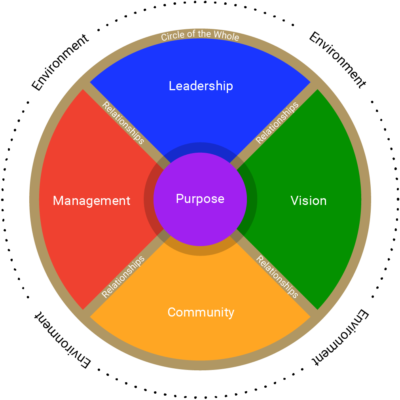
In our profession and with our training, my partner Ward and I have developed finely tuned listening. One of the things we listen for and can notice with ease is whether a person is telling a story of something they experienced and have a personal emotional connection to, or whether the story and the emotional response is borrowed from someone else. It is a powerful process to watch. Someone tells a story, a powerful story full of emotion. People who were not directly involved show the same signs of anger about the situation as though they were really there.
A Case of Borrowed Anger
In carrying out individual interviews during an organizational diagnosis to assist the leadership team of an organization, we came to realize that we were in a situation in which there was a lot of borrowed anger. The leadership team engaged us to help them figure out what was going wrong with the quality of service and why. Their goal was to improve this quality of service.
In the individual interviews, people were clearly angry. We probed about the anger and discovered it was not anger in response to something currently happening. It was borrowed anger from thirty years prior.
An incident had occurred between management and the front line workers thirty years prior. Only five of the current staff (which included hundreds of people) were employed by the organization that long ago. The narrative that continued to be told was so powerful, it stirred people of today – including new hires – up and enlist them to borrow the anger from thirty years back, keeping it alive today as a real and destructive force in the organization.
In situations of borrowed anger, the trajectory is bleak. These situations are usually filled with conflict, sometimes with real failure in a team or organization as a result. Sometimes the failure is averted, yet the residual behavior and performance are mediocre at best, falling far short of the potential.
Good people are involved who are no longer giving their best. A derailing has occurred due to borrowed anger. They experience the same stress, health challenges, and lack of motivation as those who are in the midst of a situation. As I mentioned, I have been noticing a lot of borrowed anger lately.
Finding Solutions for Borrowed Anger
When a team leader contacts us about what to do to turn the situation around, I suggest that they begin with conversations about organizational health and balance. The conversations about organizational health and balance can reframe the current situation into one of hope. It is a much more effective strategy than tackling the conflicts or the phenomenon of borrowed anger. Reframing leaves out what might be a pattern of blame and shame as it provides a more life nurturing context.
In the case of the organization with decades-long borrowed anger, once this challenge was identified, we worked with the organization in this way to support their
To learn tips and tools for a Path to Organizational Health and Balance, join us in an online workshop this Friday, January 26th. You will be able to put your learning to immediate use. Register to join the real-time online workshop or to receive all of the recordings to do a self-study with the materials provided.
Photo by Andre Hunter on Unsplash











Leave a Reply
You must be logged in to post a comment.